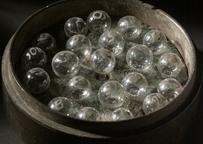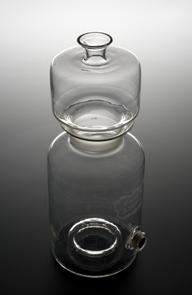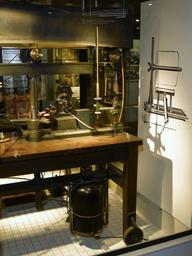

Parts of Kymograph, by C.F. Palmer and Co., London, 1925-1935, used by Sir Henry Dale, 1930-1940, Box 2 of 4.
The kymograph is a classic tool of laboratory research invented by the German physiologist Carl Ludwig (1816-1895) in 1847. One of its earliest uses was to measure the blood pressure during physiological experiments. A cannula connected to a U-shaped tube filled with mercury was inserted into the artery of an animal. On top of the mercury was a float attached to a pen. As the blood pulsated, the pen recorded the movement on smoked paper wrapped around the metal drum.
The kymograph is said to have transformed experimental physiology as the graphs produced allowed physiologists to see blood pressure on paper, giving them a permanent record of the experiment. The kymograph was later adapted to record muscle contractions and respiration. This kymograph was used by Sir Henry Dale (1875-1968), a English physiologist and pharmacologist.
Details
- Category:
- Laboratory Medicine
- Collection:
- Sir Henry Wellcome's Museum Collection
- Object Number:
- A602430/3
- Materials:
- table, wood, apparatus, iron and apparatus, brass
- Measurements:
-
overall: 1710 mm x 1365 mm x 690 mm,
large drum: 232 mm,
table: 762 mm
beam: 1200 mm
- type:
- kymograph
- credit:
- Medical Research Council




